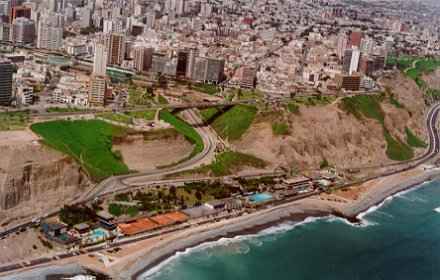Peru Mine Workers Begin National Strike for More Pay (Update2) -- Bloomberg LP
By Alex Emery
June 30 (Bloomberg) -- Peruvian mine workers began their third national strike for better pay and benefits in less than 14 months, adding to protests from Mexico to Chile that have disrupted copper supplies and sent prices to records this year.
Miners walked off the job at more than a dozen sites to pressure Congress to pass laws to increase their share of profit and improve pensions, said Luis Castillo, general secretary of the Mining Federation. The group represents about 28,000 mine workers and 70 unions.
``The strike is on across the country and will take several days to solve,'' Castillo said today in an interview from Lima. ``Talks with the congressional committee should get under way tomorrow.''
Strikes have cut copper output in Peru, Chile and Mexico, helping fuel a 28 percent rally in the price of the metal this year. Copper has climbed fivefold in the past five years as rising demand outpaced production, eroding global stockpiles. Peru is the world's largest silver producer and the third-biggest source of copper, zinc and tin.
Also joining the strike were unions representing workers at mines run by Barrick Gold Corp., Southern Copper Corp., Renco Group Inc.'s Doe Run Peru unit, Shougang Corp.'s Hierroperu iron unit, Cia. de Minas Buenaventura SA, Cia. Minera Antamina and Volcan Cia. Minera SA, the Mining Federation said.
``The strike has had a visible impact at the mine,'' Shougang Deputy Manager Raul Vera said in a telephone interview. ``But the strike isn't 100 percent, as some employees have gone to work.''
Legislation
Southern Copper's Ilo smelter and Cuajone mine are operating with subcontracted workers and have not had any ``significant'' output losses, Southern Copper spokesman Alberto Giles said in an e-mail. Toquepala mine workers didn't join the strike, he said.
Doe Run Peru's La Oroya zinc and lead smelter is operating normally, spokesman Victor Belaunde said in by telephone. Employees at Barrick's Alto Chicama and Pierina gold mines also turned up to work ``as normal,'' spokesman Vincent Borg said in a telephone interview.
Antamina spokesman Jose Salazar declined to comment.
Congress will vote this week on a law that seeks to eliminate a ceiling on workers' share of profit, Peru's Labor Minister Mario Pasco said. Workers' bonuses based on profit currently can't exceed 18 times their monthly salary.
``There's no reason for this strike,'' Pasco told reporters in Lima today. ``In a week, more or less, this law will pass.''
Futures
Copper futures for September delivery rose 0.45 cent, or 0.1 percent, to $3.8825 a pound on the Comex division of the New York Mercantile Exchange.
Gold futures for August delivery fell $3, or 0.3 percent, to $928.30 an ounce, while zinc rose $2, or 0.1 percent, to $1,932 a metric ton on the London Metal Exchange.
Peru's Mining Federation held five-day national strikes in November and May of last year. In Chile, contract workers on May 5 called off an almost three-week strike that cost Codelco, the world's biggest producer, an estimated $400 million in lost output and damages.
Mexico's largest mining union is scheduled to vote today on whether to strike to protest the labor secretary's refusal to recognize the re-election of Napoleon Gomez Urrutia as the group's general secretary.
A strike has shut down Grupo Mexico's Cananea copper mine in Mexico since July 30. Grupo Mexico is seeking to buy the workers out and reopen the mine in 2009.
Government Solution
Congress, not the companies, will have to act to solve the dispute in Peru, Buenaventura Chief Financial Officer Carlos Galvez said.
``This is a political issue that has made the federation more visible,'' Galvez said in a telephone interview. ``It's likely there will be more mining operations on strike this time than last year.''
Peruvian lawmakers have been debating legislation since 2006 that would boost profit-sharing and pensions for miners. Peruvian President Alan Garcia last week enacted a law granting more rights to employees of contractors.
To contact the reporter on the story: Alex Emery in Lima at aemery1@bloomberg.net.
Last Updated: June 30, 2008 17:23 EDT--------------------------------------------------------------------------------------------
Petrobras to set Orinoco policy in September - Brazil, Venezuela
Click here to view full article -- BNAmericasBrazil's federal energy company Petrobras (NYSE: PBR) will define its role in Venezuela's Orinoco heavy crude belt at the September meeting between the two countries, Venezuela's state oil company PDVSA said in a statement.
Lula said that both PDVSA and Petrobras would take their time to cement any joint participation.
"These are both large and very powerful oil companies that are currently establishing common denominators that will guarantee a strong participation between the two companies," Lula said.
"The more oil we find, the more powerful we will become," he said in the statement.































